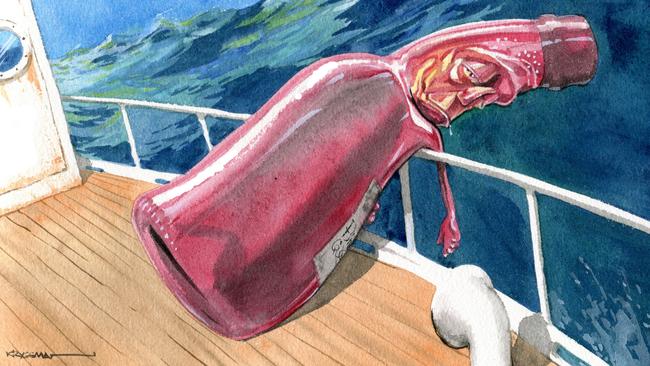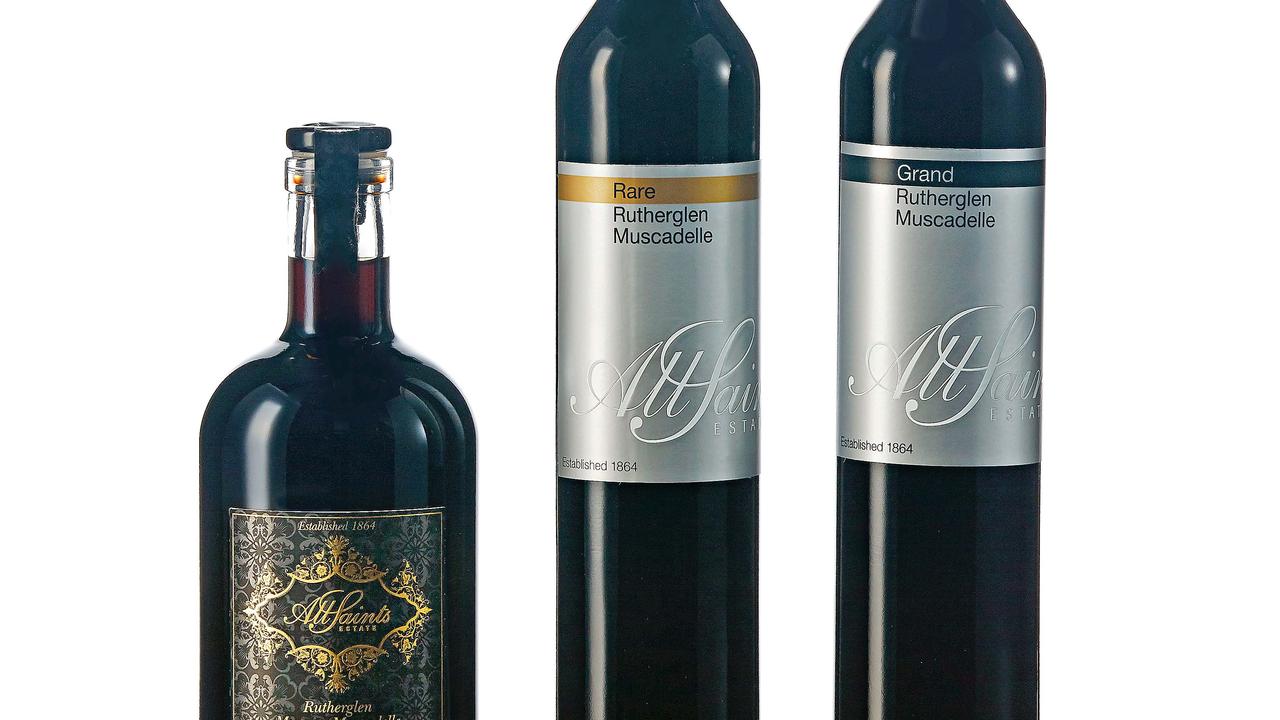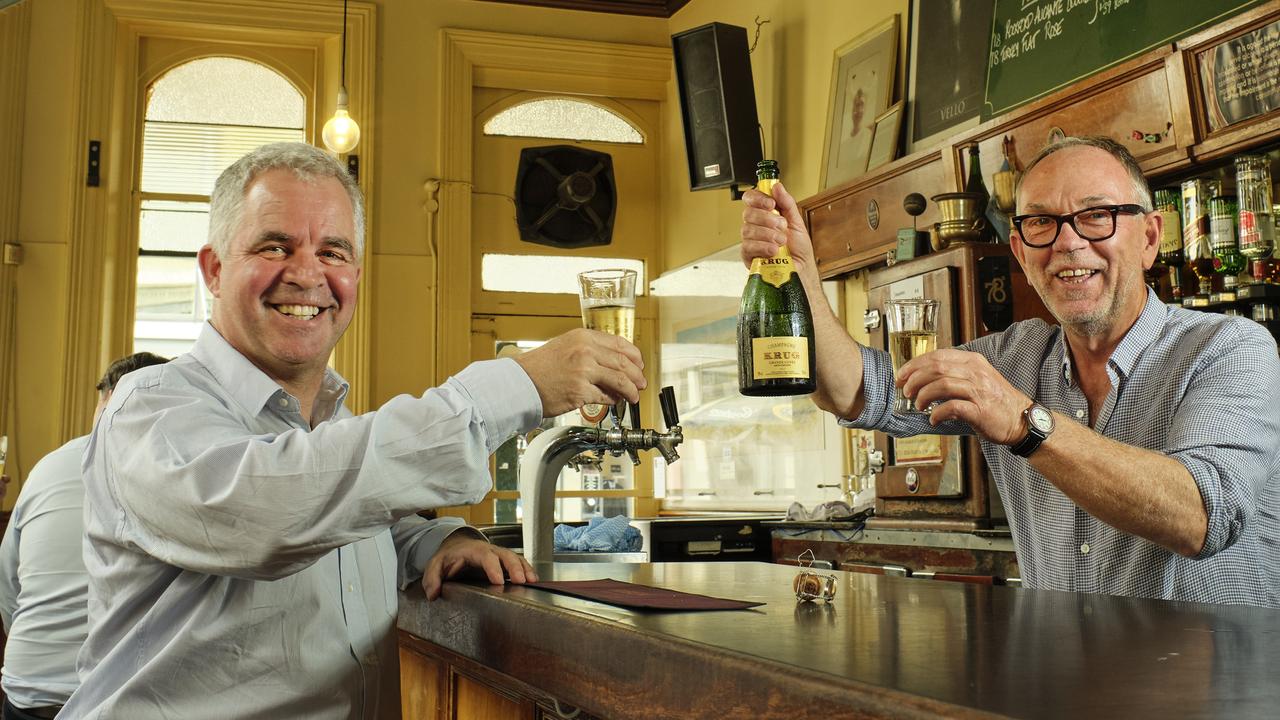Heat can ruin wine, champagne imports during shipment
Be careful when buying imported wine. There’s a chance its quality diminished on its way to Australia.

Wine is perishable. You’ll know this all too well if you’ve ever left a bottle in the boot of a car in summer, or if you’ve rescued some old wine from that uninsulated garage in Queensland where your uncle has been “cellaring” it for years.
Leaking corks, browning, oxidation, “cooked” flavours and premature ageing all are telltale signs that wine has been stored at too high a temperature.
The Australian Wine Research Institute’s technical advice on this matter is clear. “Excessive storage temperatures will have a marked effect on the shelf life of bottled wine,” states an AWRI literature review on the effects of heat. “Any storage place where the temperature exceeds 25C for long periods and 40C for short periods can affect wine quality.”
Bear this in mind the next time you walk into a wine shop or open the list at your favourite restaurant. Look at all those enticing bottles — particularly the increasing number shipped from the other side of the globe. Think about how they’ve been looked after since they left the winery in France or Italy or Spain.
MORE: Four excellent Italian wines
In the weeks and months it took them to get here — loaded on to trucks, packed into shipping containers, crossing the equator, offloaded at the wharf, stacked in a warehouse — were they always kept below 25C? Did they ever get hotter than 40C?
The answer to both questions is: it depends.
Some importers and distributors are vigilant when it comes to transporting wine in temperature-controlled refrigerated containers, called reefers in the trade.
I spoke to several large, medium-sized and small importers of high-profile, high-end wine, from Negociants Australia to Bibendum, from Cellarhand to Andrew Guard Wine Imports, and they all assured me they took every precaution to look after their bottles.
“Everything we bring in, whether it’s €2 ($3) a bottle or €200, is refrigerated from the winery’s cellar to our cool store in South Australia,” Negociants imported wine manager Tim Evans says.
“With six weeks’ sailing time, with containers above deck, sometimes being transferred from one ship to another in Singapore, the wine would warm up pretty quickly if we didn’t.”
There are other ways to minimise the effects of heat during shipping. Some importers ship in insulated containers (effectively reefers without the refrigeration turned on), and some wrap their pallets of wine in thermal blankets.
While these techniques can reduce the heat spikes, they don’t ensure a constant, cool temperature. Only a reefer can do that.
But the bulk of the wine shipped to Australia — about 70 per cent, according to some estimates — does not travel this way.
And it all comes down to cost: a refrigerated container is between 30 per cent and 100 per cent more expensive than an uninsulated or “dry” container, regardless of the value of the contents.
If you’re shipping high-priced wine you can absorb this cost to a certain extent, but if you’re shipping low-priced wine, a reefer will eat into your already slim margins.
And the fact is that most of what’s imported here is lower-priced wine.
Figures from industry body Wine Australia show that of the 92.5 million litres of wine imported last year, a whopping 60 per cent was from New Zealand — mostly cheap sauvignon blanc.
So it’s no surprise, really, that most of this isn’t shipped in reefers: it’s only a short hop across the Tasman and the wine’s hopefully not hanging around long enough to get too hot.
Likewise, the biggest shippers of wine to Australia — accounting for an estimated 50 per cent to 60 per cent of all imports — are now the supermarket duopoly Woolworths (Dan Murphy’s, BWS, Cellarmasters and Langton’s) and, albeit to a lesser extent, Coles (Vintage Cellars, First Choice and Liquorland).
As most of the supermarket wines brought into the country are high-volume, lower-priced brands, it’s unlikely they travel in refrigerated containers: one shipping company I spoke to estimates that the supermarkets’ use of reefers is considerably less than 30 per cent.
I asked Chris Baddock, general manager of Pinnacle Drinks, Woolworths’ imported liquor arm, for detail but he was unable to give me exact figures, stating he couldn’t “easily confirm the percentage of shipments that take place in refrigerated containers (but) we take due care and use various methods and container types to look after the wine”. Coles was unable to comment.
It’s not only cheap wine being imported in non-refrigerated containers, though — and one area of particular concern is champagne.
A high proportion of the eight million bottles of champagne imported to Australia last year were non-vintage bottles from well-known houses such as Moet & Chandon. And although I have been able to ascertain that some brands — such as Mumm and Charles Heidsieck — are shipped in reefers (as are the champagnes brought in by the importers mentioned above), I can’t be sure about all of them.
I approached several other champagne houses for comment but had not heard back from them by the time of publication.
And then there’s the problem of parallel importing — the so-called grey market. Again, this is not uncommon with champagne: not every bottle of some of the well-known brands that you find on bottleshop shelves or restaurant lists around the country has been shipped by an authorised importer.
Stock also makes its way into the local trade through other channels and is offered at prices well below the legitimate imports — stock that may well have spent time sweltering on various ships and warehouses from the Middle East to Asia before it arrives in Australia.
“I get emails most days from dodgy dealers offering me cases of Veuve at crazy low prices,” one importer tells me. “But you’d be mad to buy it: Christ knows where it’s been and how it’s been treated.”


